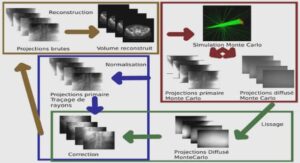Biometric recognition technology is used in a wide variety of security applications. The aim of such systems is to recognize a person based on physiological or behavioral traits. In the first case, recognition is based on measurements of biological traits, such as the fingerprint, face, iris, etc. The second is concerned with behavioral traits such as voice and the handwritten signature (Jain et al. (2004)).
The handwritten signature is a particularly important type of biometric trait, mainly due to its ubiquitous use to verify a person’s identity in legal, financial and administrative areas. One of the reasons for its widespread use is that the process of collecting handwritten signatures is non-invasive, and people are familiar with the use of signatures in their daily life (Plamondon & Srihari (2000)).
Signature verification systems aim to automatically discriminate if a signature sample is indeed of a particular person or not. This type of system usually consists of two phases: in an enrollment phase, users of the system provide signature samples. During the verification phase, a user claims a particular identity and provide a signature sample. The system then uses the samples provided during enrollment (or a model built using them) to verify if the user is indeed who he or she claims to be – that is, it classifies the sample as genuine or forgery.
Depending on the acquisition method, signature verification systems are divided into two categories: online (dynamic) and offline (static). In the online case, an acquisition device, such as a digitizing tablet, is used to acquire the user’s signature. The data is collected as a sequence over time, containing the position of the pen, and in some cases including additional information such as the pen inclination, pressure, etc. In offline signature verification, the signature is acquired after the writing process is completed. In this case, the signature is represented as a digital image (Impedovo & Pirlo (2008)).
Feature Extraction
Offline signature verification has been studied from many perspectives, yielding multiple alternatives for feature extraction. Broadly speaking, the feature extraction techniques can be classified as Static or Pseudo-dynamic, where pseudo-dynamic features attempt to recover dynamic information from the signature execution process (such as speed, pressure, etc.). Another broad categorization of the feature extraction methods is between Global and Local features. Global features describe the signature images as a whole – for example, features such as height, width of the signature, or in general feature extractors that are applied to the entire signature image. In contrast, local features describe parts of the images, either by segmenting the image (e.g. according to connected components) or most commonly by the dividing the image in a grid (of Cartesian or polar coordinates), and applying feature extractors in each part of the image.
Recent studies approach the problem from a representation learning perspective (Hafemann et al. (2016b), Hafemann et al. (2017a), Rantzsch et al. (2016), Zhang et al. (2016)): instead of designing feature extractors for the task, these methods rely on learning feature representations directly from signature images.
Handcrafted feature extractors
A large part of the research efforts on the field has been devoted to finding good feature representations for offline signatures. In this section we summarize the main descriptors proposed for the problem.
Geometric Features
Geometric features measure the overall shape of a signature. This includes basic descriptors, such as the signature height, width, caliber (height-to-width ration) and area. More complex descriptors include the count of endpoints and closed loops (Baltzakis & Papamarkos (2001)). Besides using global descriptors, several authors also generate local geometric features by dividing the signature in a grid and calculating features from each cell. For example, using the pixel density within grids (Baltzakis & Papamarkos (2001), El-Yacoubi et al. (2000), Justino et al. (2000)).
Graphometric features
Forensic document examiners use the concepts of graphology and graphometry to examine handwriting for several purposes, including detecting authenticity and forgery. Oliveira et al. (2005) investigated applying such features for automated signature verification. They selected a subset of graphometric features that could be described algorithmically, and proposed a set of feature descriptors. They considered the following static features: Calibre – the ratio of Height / Width of the image; Proportion, referring to the symmetry of the signature, Alignment to baseline – describing the angular displacement to an horizontal baseline, and Spacing – describing empty spaces between strokes.
Directional features
Directional features seek to describe the image in terms of the direction of the strokes in the signature. Sabourin & Drouhard (1992) and Drouhard et al. (1996) extracted Directional-PDF (Probability Density Function) from the gradient of the signature outline. Rivard et al. (2013) used this method of feature extraction using grids of multiple scales. Zhang (2010) investigated the usage of pyramid histogram of oriented gradients (PHOG). This descriptor represents local shapes in a image by a histogram of edge orientations, also in multiple scales .
Mathematical transformations
Researchers have used a variety of mathematical transformations as feature extractors. Nemcek & Lin (1974) investigated the usage of a fast Hadamart transform and spectrum analysis for feature extraction. Pourshahabi et al. (2009) used a Contourlet transform as feature extraction, stating that it is an appropriate tool for capturing smooth contours. Coetzer (2005) used the discrete Radon transform to extract sequences of observations, for a subsequent HMM training. Deng et al. (1999) proposed a signature verification system based on the Wavelet transform. Zouari et al. (2014) investigated the usage of the Fractal transform for the problem.
INTRODUCTION |





